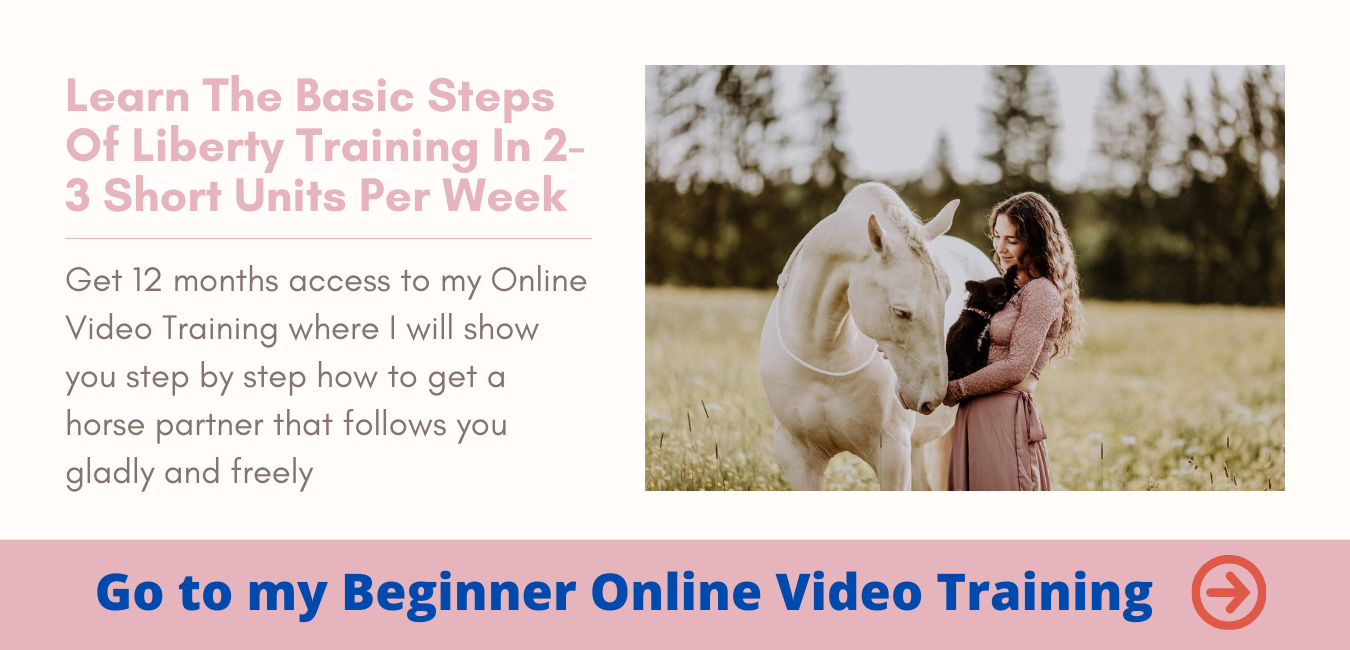Certainly you know the videos in which my horses gallop around me on a small circle.
Again and again my horses jump spectacular changes and show different lessons out of the movement.
The basis is actually always the circle on which the horse circles around me.
Now I would like to demonstrate to you how you can include this circle in your horse training.
But why such a narrow circle?
The size of the circle has some practical advantages. If the horse is close to me and at my side, it is easier for me to get his attention.
At this distance I can not only work with my body language and voice signals, but also “in case of emergency” touch my reflex points, the points that make my horse come back to me without thinking.
The gymnastic value is not to be underestimated either, but it really does take time for your horse to canter around you in balance like that.
In any case, the distance between me and my horse is optimal this way, because he respects my dance area and is still as close to me as possible.
How do I set up this circle?
So that my horse learns that exactly this circle and this distance to me are the “feel-good zone”, I really start with lead exercises at the beginning.
I explain to my horse that he is not allowed to overtake me with his shoulder, but that he is also not allowed to fall behind me with his gait. Of course, bumping is not allowed either!
In any case, the position at neck level is perfect for me, because this way I can see what’s going on in my horse’s face and eyes.
In addition, it has here also in faster gaits enough time to really pay attention to me and to brake also from the gallop together with me.
If I were to walk at the level of the horse’s shoulder, it wouldn’t work because my horse would have a hard time seeing me and would quickly overtake me. That could also quickly become dangerous in case of doubt!
The setup of the lead exercise
I lead the horse on a large circle or a long straight line and remind him to come next to me at a walk with a driving impulse of the whip or brake him again and again if he pushes.
When it is in the right position – shoulder behind me and nose line clearly in front of me – I give no more impulses and praise it with my voice.
Stopping
Of course, I also practice stopping again and again. It is important that you give the signal to stop with your body really clearly, because only in this way can the stop later also work well in higher gaits.
To do this, raise the crop, lean your body back and give your voice signal before you actually stop.
The whip will later be the first visual impulse for your horse, for example, to start braking from a canter.
Start Walking
To start walking, lean your upper body forward again, move your arm in the direction of movement and give your voice signal to start.
The whip remains lowered of course and, if necessary, gives a driving impulse in the direction of the croup.
The base is the foundation on which you build
Even if you now have the feeling that you can already lead your horse because you do it every day, I can only recommend that you still practice this basis intensively.
The better your horse learns to stay in his “feel-good zone” next to you at the level of the gait, the easier it will be for you to learn the faster gaits and later also the free circling around you.
This “feel-good position” is, so to speak, the foundation on which the entire free work is subsequently built – so this training is worthwhile! Because the firmer you have “built” this base at the end, the safer “your house” will stand afterwards.
But leading? Don’t I do that every day?
If your horse is already comfortable with leading, it really doesn’t take long to get him to understand this task.
Sometimes it is a little bit of a challenge to install this new position, because your horse might have learned to be pulled behind you or to push. But especially then you will really benefit from this exercise in everyday life!
For example, just add the lead training a few minutes before riding or lunging, and your horse will soon understand the new “feel-good zone” and this exercise won’t even cost you much time!
Afterwards, don’t forget to integrate this leading position into your daily routine as soon as your horse has an idea of what you want him to do.
If you train leading like this every day, this “new way of leading” will be established really quickly. And you will profit a lot in the free work with your horse!
In my video I show you again how I build up my leadership training.
[su_youtube url=”https://youtu.be/_ga_7M1O62s”]
Have fun practicing!
Your Kenzie




